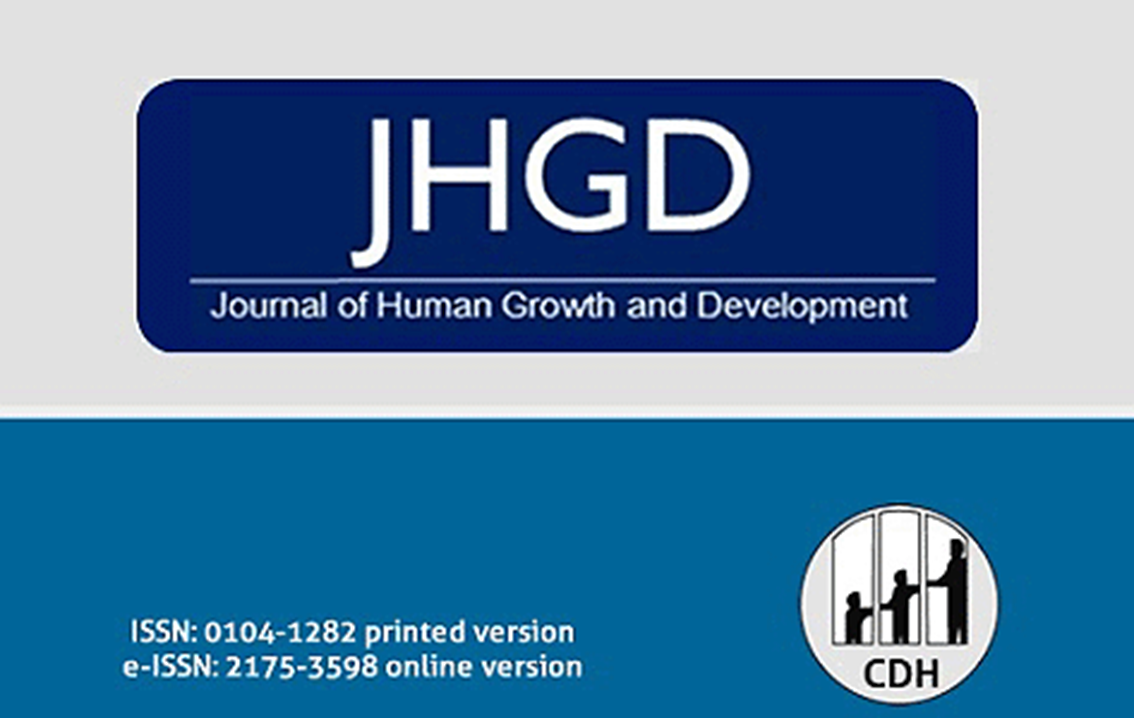Foot rotation asymmetry in Down syndrome and the relationship with crawling and walking onset: a cross sectional study
DOI:
https://doi.org/10.36311/jhgd.v31.11279Keywords:
Down syndrome, Gait, Locomotion, Motor skills, PostureAbstract
Introduction: Down syndrome individuals have different gait patterns, which include specific characteristics such as foot rotation asymmetry.
Objective: The aim of this study was to analyze the relationship between this asymmetry and the previous acquisition of hands-and-knees crawling in Down syndrome children, as well as the probable association of this gait to gender, ethnicity, comorbidities, physiotherapy, and occupational therapy interventions.
Methods: In this cross-sectional study, 361 children with or without foot rotation asymmetry were selected. An online questionnaire was administered to the parents or guardians of those children.
Results: Hands-and-knees crawling decreased the prevalence of foot rotation asymmetry in Down syndrome children. The longer it took for walking onset, the higher the prevalence of this asymmetry. Indeed, for each month of delay there was a 7% increase in prevalence. There was a significant relationship between orthopedic alterations in knees or flat feet and foot rotation asymmetry. There was no significance related to gender, ethnicity, other comorbidities, physiotherapy or occupational therapy interventions.
Conclusion: The findings in this study revealed that foot rotation asymmetry may be related to the acquisition of the motor skills described above, especially with regards to hands-and-knees crawling and walking onset.
Downloads
References
Brasil. Ministério da Saúde. Secretaria de Atenção à Saúde. Diretrizes de atenção à pessoa com síndrome de Down. Brasília; 2013.
Bull MJ, Committee on Genetics. Health supervision for children with Down syndrome. Pediatrics. 2011; 128(2):393-406. https://doi.org/10.1542/peds.2011-1605.
Roizen NJ, Patterson D. Down’s syndrome. Lancet. 2003; 361(9365):1281-9. https://doi.org/10.1016/S0140-6736(03)12987-X.
Lott IT. Neurological phenotypes for Down syndrome across the life span. Prog Brain Res. 2012; 197:101-21. https://doi.org/10.1016/B978-0-444-54299-1.00006-6.
Wisniewski KE. Down syndrome children often have brain with maturation delay, retardation of growth and cortical dysgenesis. Am J Med Genet Suppl. 1990; 7:274-81. https://doi.org/10.1002/ajmg.1320370755.
Pereira K, Basso RP, Lindquist ARR, Silva LGP, Tudella E. Infants with Down syndrome: percentage and age for acquisition of gross motor skills. Res Dev Disabil. 2013; 34(3):894-901. https://doi.org/10.1016/j.ridd.2012.11.021.
Tudella E, Pereira K, Basso RP, Savelsbergh GJP. Description of the motor development of 3-12 month old infants with Down syndrome: the influence of the postural body position. Res Dev Disabil. 2011; 32(5):1514-20. https://doi.org/10.1016/j.ridd.2011.01.046.
Cardoso ACN, Campos AC, Santos MM, Santos DCC, Rocha NACF. Motor performance of children with Down syndrome and typical development at 2 to 4 and 26 months. Pediatr Phys Ther. 2015; 27(2):135-41. https://doi.org/10.1097/PEP.0000000000000120.
Palisano RJ, Walter SD, Russell DJ, Rosenbaum PL, Gémus M, Galuppi BE, et al. Gross motor function of children with Down syndrome: creation of motor growth curves. Arch Phys Med Rehabil. 2001; 82(4):494-500. https://doi.org/10.1053/apmr.2001.21956.
Walker D-M. The Internet as a medium for health services research. Part 2. Nurse Res. 2013; 20(5):33-7. https://doi.org/10.7748/nr2013.05.20.5.33.e295.
Meho LI. E-mail interviewing in qualitative research: a methodological discussion. J Am Soc Inf Sci Technol. 2006; 57(10):1284-95. https://doi.org/10.1002/asi.
Wu J, Ulrich DA, Looper J, Tiernan CW, Angulo-Barroso RM. Strategy adoption and locomotor adjustment in obstacle clearance of newly walking toddlers with Down syndrome after different treadmill interventions. Exp Brain Res. 2008; 186(2):261-72. https://doi.org/10.1007/s00221-007-1230-7.
Angulo-Barroso RM, Wu J, Ulrich DA. Long-term effect of different treadmill interventions on gait development in new walkers with Down syndrome. Gait Posture. 2008; 27(2):231-8. https://doi.org/10.1016/j.gaitpost.2007.03.014.
Rigoldi C, Galli M, Albertini G. Gait developmental during lifespan in subjects with Down syndrome. Res Dev Disabil 2011; 32(1):158-63. https://doi.org/10.1016/j.ridd.2010.09.009.
Xiong QL, Hou WS, Xiao N, Chen YX, Yao J, Zheng XL, et al. Motor skill development alters kinematics and co-activation between flexors and extensors of limbs in human infant crawling. IEEE Trans Neural Rehabil Eng. 2018; 26(4):780-7. https://doi.org/10.1109/TNSRE.2017.2785821.
Lloyd M, Burghardt A, Ulrich DA, Angulo-Barroso R. Physical activity and walking onset in infants with Down syndrome. Adap Phys Activ Q. 2010; 27(1):1-16. https://doi.org/10.1123/apaq.27.1.1.
Angulo-Barroso R, Burghardt AR, Lloyd M, Ulrich DA. Physical activity in infants with Down syndrome receiving a treadmill intervention. Infant Behav Dev. 2008; 31(2):255-69. https://doi.org/10.1016/j.infbeh.2007.10.003.
Rihtman T, Tekuzener E, Parush S, Tenembaum A, Bachrach SJ, Ornoy A. Are the cognitive functions of children with Down syndrome related to their participation? Dev Med Child Neurol. 2010; 52(1):72-8. https://doi.org/10.1111/j.1469-8749.2009.03356.x
Aoki S, Yamauchi Y, Hashimoto K. Developmental trend of children with Down’s syndrome: how do sex and neonatal conditions influence their developmental patterns? Brain Dev. 2018; 40(3):181-7. https://doi.org/10.1016/j.braindev.2017.10.001.
Malak R, Kostiukow A, Krawczyk-Wasielewska A, Mojs E, W. Samborski W. Delays in motor development in children with Down syndrome. Med Sci Monit. 2015; 21:1904-10. https://doi.org/10.12659/MSM.893377.
Kloze A, Brzuszkiewicz-Kuzmicka G, Czyzewski P. Use of the TIMP in assessment of motor development of infants with Down syndrome. Pediatr Phys Ther. 2016; 28(1):40-5. https://doi.org/10.1097/PEP.0000000000000216.
Wentz EE. Importance of initiating a “tummy time” intervention early in infants with Down syndrome. Pediatr Phys Ther. 2017; 29(1):68-75. https://doi.org/10.1097/PEP.0000000000000335.
Kocon H, Kabacyj M, Zgoda M. The results of operative treatment of patellar instability in children with Down’s syndrome. J Pediatr Orthop. B. 2012; 21(5):407-10. https://doi.org/10.1097/BPB.0b013e328354f684.
Galli M, Cimolin V, Rigoldi C, Pau M, Costici P, Albertini G. The effects of low arched feet on foot rotation during gait in children with Down syndrome. J Intellect Disabil Res. 2014; 58(8):758-64. https://doi.org/10.1111/jir.12087.
Concolino C, Pasquzzi A, Capalbo G, Sinopoli S, Strisciuglio P. Early detection of podiatric anomalies in children with Down syndrome. Acta Paediatr. 2006; 95(1):17-20. https://doi.org/10.1080/08035250500325108.
Lim PQ, Shields N, Nikolopoulos N, Barrett JT, Evans AM, Taylor NF, et al. The association of foot structure and footwear fit with disability in children and adolescents with Down syndrome. J Foot Ankle Res. 2015; 8(1):4. https://doi.org/10.1186/s13047-015-0062-0
Perotti LR, Abousamra O, Orozco MPD, Rogers KJ, Sees JP, Miller F. Foot and ankle deformities in children with Down syndrome. J Child Orthop. 2018; 12(3):218-26. https://doi.org/10.1302/1863-2548.12.170197.
Gontijo APB, Mancini MC, Silva PLP, Chagas PSC, Sampaio RF, Luz RE, et al. Changes in lower limb co-contraction and stiffness by toddlers with Down syndrome and toddlers with typical development during the acquisition of independent gait. Hum. Mov. Sci. 2008; 27(4):610-21. https://doi.org/10.1016/j.humov.2008.01.003.
Downloads
Published
Issue
Section
License
Copyright (c) 2021 Camila Valero, Zan Mustacchi, Patrícia M. Bezerra, Francisco W. S. Figueiredo, Alzira A. S. Carvalho, David Feder

This work is licensed under a Creative Commons Attribution 4.0 International License.







